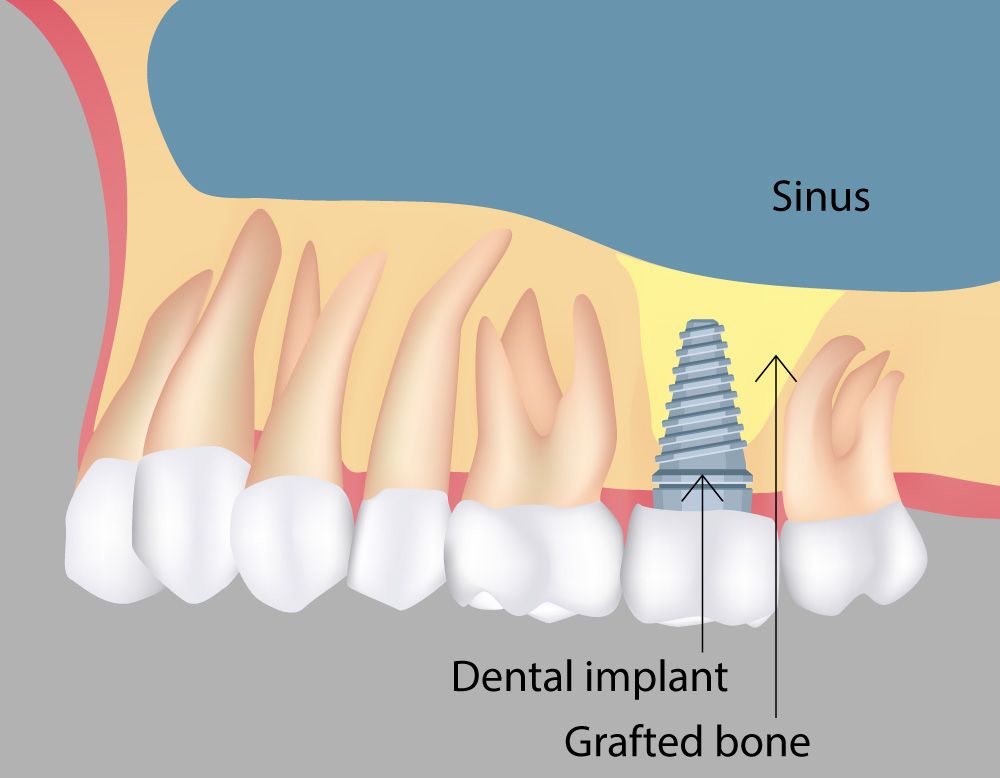
Maxillary Sinus Lift

A maxillary sinus lift, also known as a sinus augmentation or sinus elevation, is a surgical procedure performed in dentistry to increase the amount of bone in the posterior maxilla (upper jaw) to enable the successful placement of dental implants. The procedure is necessary when there is insufficient bone height in the upper jaw due to the enlargement of the maxillary sinus or other factors such as bone resorption.
The maxillary sinuses are air-filled spaces located above the upper teeth, and they can expand over time, reducing the amount of bone available for dental implant placement. The sinus lift procedure involves lifting the sinus membrane and placing bone graft materials beneath it to create a stable foundation for dental implants.
The maxillary sinus lift procedure typically follows these steps:
Preoperative Assessment: The dentist or oral surgeon conducts a thorough examination, including dental imaging (such as X-rays or CT scans), to assess the amount of available bone and the dimensions of the maxillary sinus.
Anesthesia: The patient is given local anesthesia to numb the area where the sinus lift will take place, ensuring a comfortable procedure.
Access to the Sinus: An incision is made in the gum tissue to expose the underlying bone. Then, a small window is created in the bone to access the maxillary sinus.
Sinus Membrane Elevation: The sinus membrane, which lines the sinus cavity, is carefully lifted upward, creating a space between the membrane and the floor of the sinus.
Bone Grafting: Bone graft materials, such as autografts (bone from the patient’s own body), allografts (bone from a human donor), xenografts (bone from an animal source), or synthetic materials, are placed in the space created between the sinus membrane and the sinus floor. These bone grafts act as a scaffold for new bone formation.
Dental Implant Placement (optional): In some cases, dental implants can be placed immediately after the sinus lift procedure if there is enough stability and bone support. In other situations, a healing period of several months may be required for the bone graft to integrate and mature before dental implants can be placed.
Suture and Healing: The gum tissue is sutured back in place, and the area is allowed to heal. Over time, the bone graft materials integrate with the surrounding bone through a process called osseointegration, increasing bone height and volume.
Maxillary sinus lifts are complex procedures that require a skilled and experienced dental or oral surgery professional. The success of the procedure depends on various factors, such as the patient’s overall health, the quality and quantity of the bone graft material, and proper post-operative care. Patients considering a maxillary sinus lift should consult with a qualified dentist or oral surgeon to determine the most appropriate treatment plan for their specific needs and oral health conditions.
Recent Posts


Have Any Question?
- (+62)81 422 7509
- [email protected]

